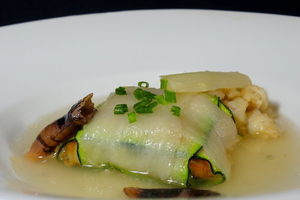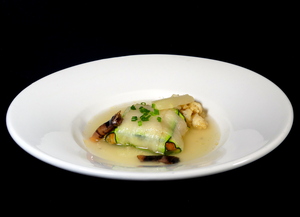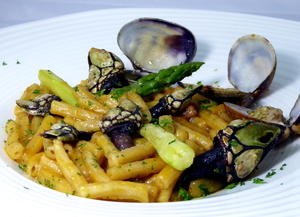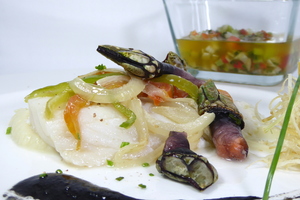Barnacles
Category
Seafood
Seasonal period:
March, April, May, June, September, October, November, December
Allergens
The barnacle is a cirripede crustacean.
It has a brown, almost black stalk and a grey nail. They live attached to the rocks in areas with usual undercurrents, so capturing them can be dangerous.
They are sold alive and exceptionally cooked. They are consumed boiled and generally lukewarm.
Nutritional information (0.1 kg)
Energy
59.0
kcal
Carbohydrates
0.0
g
Proteins
13.6
g
Lipids
0.5
g
Sugars
0.0
g
Salt (Sodium)
18.0
mg
Folic acid
7.0
ug
Vitamin C
0.0
g
Vitamin A
0.0
ug
Zinc
0.5
mg
Iron
0.3
mg
Calcium
126.0
mg
Cholesterol
14.0
mg
Polyunsaturated fatty acids
0.01
g
Monounsaturated fatty acids
0.01
g
Saturates
0.01
g
Fiber
0.0
g
The data is merely a guide and should not be used for medical purposes. Those responsible for the web disclaims any responsibility.
Recipes
-
Type of dish
- Beers
- Cocktails
- Breakfasts and brunch
- Burguers
- Juices, milkshakes and beverages
- Shellfish
- Bread and pastries
- Pizzas, patty
- Dessert
- Pasta
- Sándwich
- Pastries
- Finger foods
- Ice creams and sorbets
- Legumes
- Salads
- Eggs
- Patty
- liqueur
- Harvard plate
- Main course
- Meats
- Fish
- Birds
- Vegetables
- Soups and creams
- Rices
- Coffee, chocolate and infusion
- Cheeses
- Appetizers and canapes
- Temperature
- Cuisine type
- Additional culinary preparation
- Conservation technique
- Seasonal recipes
-
- Aromatic herbs
- Beverages
- Big game hunt
- Bread and pastries
- Canned goods and pickles
- Cereals
- Condiments, spices and additives
- Cooked, salted, preserved and cold meats
- Dried fruits and nuts
- Dry pulses
- Edible oils and vinegars
- Eggs and derivatives
- Feathered game hunt
- Fish cuts
- Fishes
- Insects
- Kitchen and bakery tecniques
- Kitchen and bakery utensils
- Meat cuts
- Meats
- Milk, cream and derivatives
- Mushrooms
- Offal
- Pasta, rice, flour and derivatives
- Poultry
- Seafood
- Service techniques
- Service utensils
- Vegetables cuts
- Vegetables, fruits, tubers and seaweed





